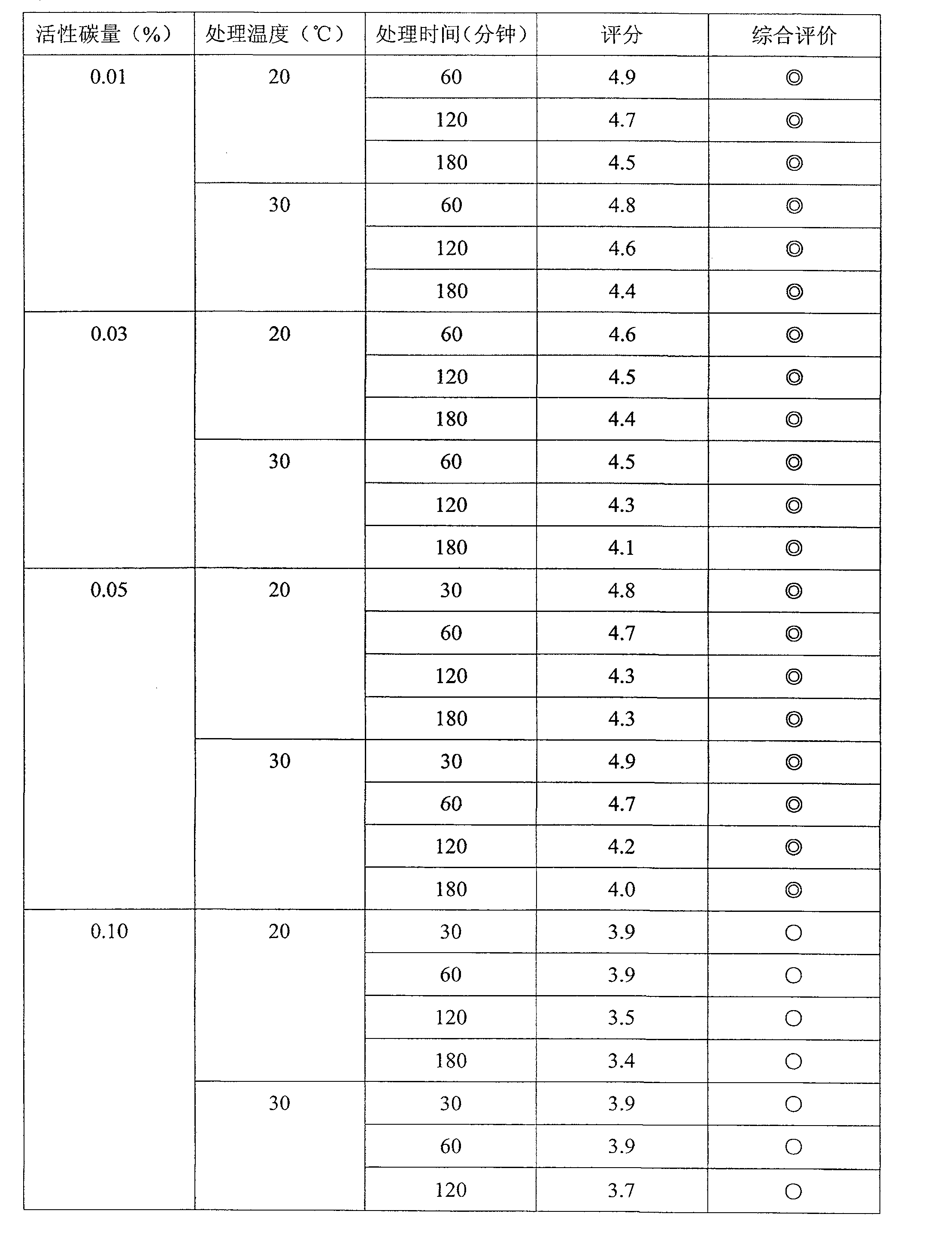Method of producing seasoning
A manufacturing method and seasoning technology, which is applied in the field of seasoning manufacturing, can solve the problems of not being able to impart a strong taste and not cover up, and achieve the effect of excellent heating stability
- Summary
- Abstract
- Description
- Claims
- Application Information
AI Technical Summary
Problems solved by technology
Method used
Image
Examples
Embodiment 1
[0041] The research of embodiment 1 decomposition time
[0042] 60Kg expanded defatted soybeans, 47Kg L.lactis AJ110212 (FERM BP-8552) culture solution (pH6.3) was dropped into a mixer (mazelar (manufactured by Industrial Machinery Co., Ltd.)) and fully mixed, then A.sojaeAJ117552 ( FERM P-19637) spores were mixed to make 2×10 6 pieces / g of raw materials. Put the above mixture into a ventilated koji making machine, and cultivate it for 45 hours while keeping the product temperature at 30-32°C. 1,500 g of the obtained koji and 4,050 g of salt water having a salt concentration of 15.6% by weight were put into a glass bottle. As salt, NaCl M (manufactured by Naikai Salt Industry Co., Ltd.) was used. Put the glass bottle into a constant temperature tank, and carry out fermentation at 35° C. for 10 to 20 days. In addition, stir once a day during fermentation to evenly disperse the koji floating on the top. After 10, 12, 14, 16, 18, and 20 days from the start of fermentation, s...
Embodiment 2
[0049] The research of embodiment 2 decomposition temperature
[0050] 60Kg expanded defatted soybeans, 47Kg L.lactis AJ110212 (FERM BP-8552) culture solution (pH6.3) was dropped into a mixer (mazelar (manufactured by Industrial Machinery Co., Ltd.)) and fully mixed, then A.sojaeAJ117552 ( FERM P-19637) spores were mixed to make 2×10 6 pieces / g of raw materials. Put the above mixture into a ventilated koji making machine, and cultivate it for 45 hours while keeping the product temperature at 30-32°C. 189 g of the obtained koji and 511 g of salt water having a salt concentration of 15.6% by weight were put into a glass bottle. As salt, NaCl M (manufactured by Naikai Salt Industry Co., Ltd.) was used. Put the glass bottle into a constant temperature tank, and ferment for 14 days at 31-41°C. In addition, stir once a day during fermentation to evenly disperse the koji floating on the top. After the fermentation is over, the residue is removed with a filter cloth to obtain raw...
Embodiment 3
[0057] Example 3 Research on the Proportion of Cooked Defatted Soybeans
[0058]The puffed defatted soybeans cost a manufacturing cost because they are processed in an extruder. It is possible to reduce the cost of raw materials by blending a part of steamed defatted soybeans. This time, the raw materials of puffed defatted soybeans and cooked defatted soybeans were studied in the dry weight ratio of 10:0, 8:2, 6:4, 5:5, 4:6, 3:7, 0:10. However, cooked defatted soybeans are expressed by dry weight before cooking. In fact, after adding the lactic acid bacteria culture solution (pH6.3) of L.lactis AJ110212 (FERM BP-8552) in the expanded defatted soybeans and the cooking defatted soybeans of the mixing ratio shown in Table 3, add A.sojaeAJ117552 (FERM P-19637 ) spores, making it a 2×10 6 pieces / g of raw materials. 300 g of the mixture was put into koji respectively, and koji making was carried out for 43 hours while keeping the product temperature at 30-32°C. 540 g of salt w...
PUM
 Login to View More
Login to View More Abstract
Description
Claims
Application Information
 Login to View More
Login to View More - R&D
- Intellectual Property
- Life Sciences
- Materials
- Tech Scout
- Unparalleled Data Quality
- Higher Quality Content
- 60% Fewer Hallucinations
Browse by: Latest US Patents, China's latest patents, Technical Efficacy Thesaurus, Application Domain, Technology Topic, Popular Technical Reports.
© 2025 PatSnap. All rights reserved.Legal|Privacy policy|Modern Slavery Act Transparency Statement|Sitemap|About US| Contact US: help@patsnap.com


